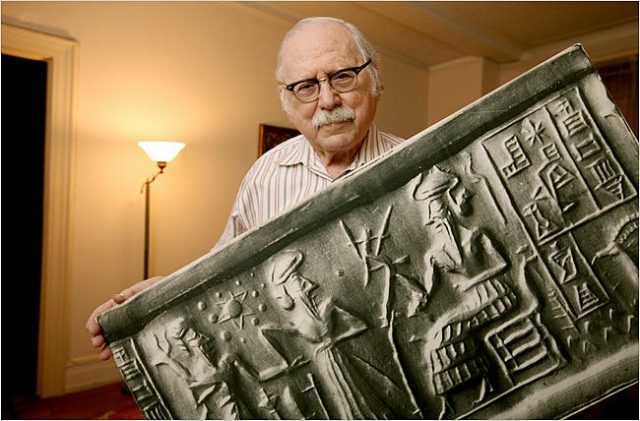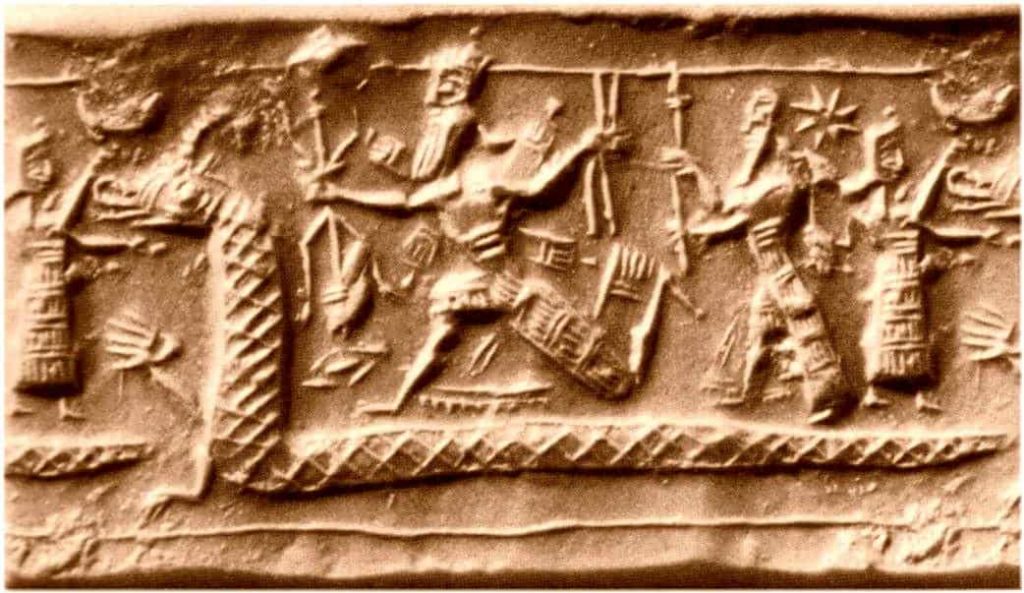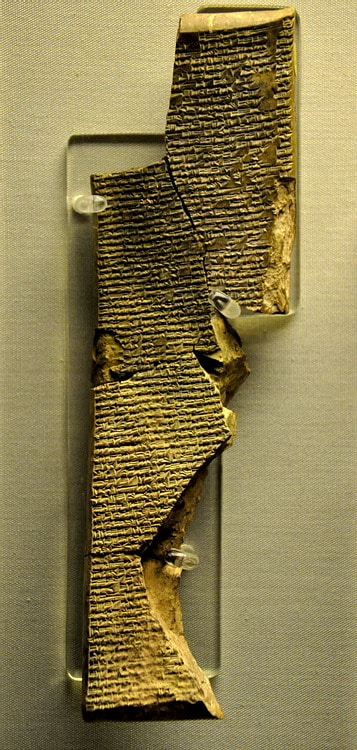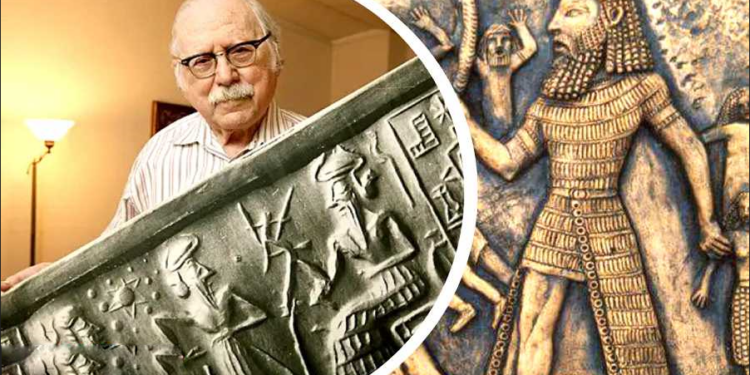The Anunnaki, also known as “those who descended from heaven,” are the most powerful deities in the pantheon of the ancient Sumerians, Akkadians, Assyrians, and Babylonians who lived in Mesopotamia, currently situated in modern Iran and Iraq. For the Sumerians, the Anunnaki were the ultimate deciders of their destinies. These gods were also said to be children of the Earth and sky. According to some scholars, the Anunnaki may have existed.
In Sumerian literature, Enlil and Enki, along with their father An, the deity of the heavens, formed a trinity. They governed the universe, the sky, and the Earth together. They were also immensely powerful in their own right, serving as patrons of their cities. In an epic from ancient Mesopotamia known as “Atrahasis,” which covers the account of the Great Flood, Enki is responsible for the creation of humankind, which was meant to serve the gods.

This epic tells how Atrahasis was the only human to survive a seven-day flood and then offer sacrifices to please Enlil and the other gods. Enki explained his reasons for saving Atrahasis and showed what a good man he was. The gods were then pleased and agreed to repopulate the world with humans, but with limitations this time, such as being less fertile, short-lived, and more vulnerable than the previous race.
As seen by his collection of books, “The Chronicles of the Earth,” Zecharia Sitchin has a different understanding of the origins of humanity. He explained that around 445,000 years ago, Annunaki came to Earth from Nibiru. According to him, these ancient astronauts touched one of Earth’s seas and established Eridu, “Home in the Faraway.”

Sitchin claimed to have read and interpreted ancient Sumerian and Akkadian clay tablets. He began translating the myth of Earth’s creation, which shares similarities to biblical Genesis, by focusing on the Babylonian poem Enuma Elish, which was collected on clay tablets with cuneiform writings from the library of the Assyrian king Assurbanipal in the city of Nineveh.
According to his translation, the “Twelfth Planet,” known as Nibiru, has a long elliptical orbit of 3,600 years around the Sun and was populated by beings very similar to humans. According to Sitchin, millions of years ago, one of Nibiru’s two moons would have crashed into Tiamat, an ancient planet that used to be between Mars and Jupiter. Tiamat would have broken in two, and one of the pieces would have been pushed into a new orbit with one of Nibiru’s moons, making Earth and its moon.

The Enuma Elish tells the story of the great god Marduk’s victory over the forces of chaos and his establishment of order at the world’s creation. The story begins like this:
“When in the height heaven was not named, And the Earth beneath did not yet bear a name, And the primeval Apsu, who begat them, And chaos, Tiamut, the mother of them both. Their waters were mingled together, And no field was formed, no marsh was to be seen; When of the gods none had been called into being, And none bore a name, and no destinies were ordained; Then were created the gods in the midst of heaven, Lahmu and Lahamu were called into being….”
Note: All creation myth tablets can be found in the Ashur, Kish, and Ashurbanipal libraries at Nineveh. Intriguingly, imprints on the tables indicate copies of much older versions of the narrative that date back to well before the fall of Sumer around 1750 BCE.
According to the cuneiform tablets, human-like gods governed the Earth initially. When they first landed on Earth, they made it habitable by cultivating the soil and extracting the minerals. The passage also mentions the revolution between the gods and their workers.
“When the gods like men, Bore the work and suffered the toll. The toil of the gods was great, The work was heavy, the distress was.”
It is said that before humans, the Anunnaki (ancient Sumerian, Akkadian, Assyrian, and Babylonian deities) used the Igigi (sometimes also spelled “Igigu”), the young generation of Ancient Astronaut Gods, as their servants to mine gold on Earth. However, when humans rebelled against the Annunaki, the Igigi were replaced by humans. The ancient Mesopotamians believed that heaven consisted of three domes. The lowest dome of heaven housed the stars, while the intermediate dome housed the Igigi, the younger gods. The farthest and highest dome of heaven was personified as An, the sky god.
In addition, most academics agree that the Igigi are the Sumerian deities of myth. They say the Igigi were servants of the powerful Anunnaki who rose against Enlil, and his regime.
Ancient Origins writes: “Anu, the god of gods, agreed that their labor was too great. His son Enki, or Ea, proposed to create man to bear the labor, and so, with the help of his half-sister Ninki, he did. A god was put to death, and his body and blood were mixed with clay. From that material, the first human being was created, in likeness to the gods.
You have slaughtered a god together, With his personality. I have removed your heavy work. I have imposed your toil on man. In the clay, god and man. Shall be bound, To a unity brought together; So that to the end of days. The Flesh and the Soul. Which in a god have ripened. That soul in a blood-kinship be bound.
This first man was created in Eden, a Sumerian word that means ‘flat terrain.’ In the Epic of Gilgamesh, Eden is mentioned as the garden of the gods, located somewhere in Mesopotamia, between the Tigris and Euphrates rivers.”
























